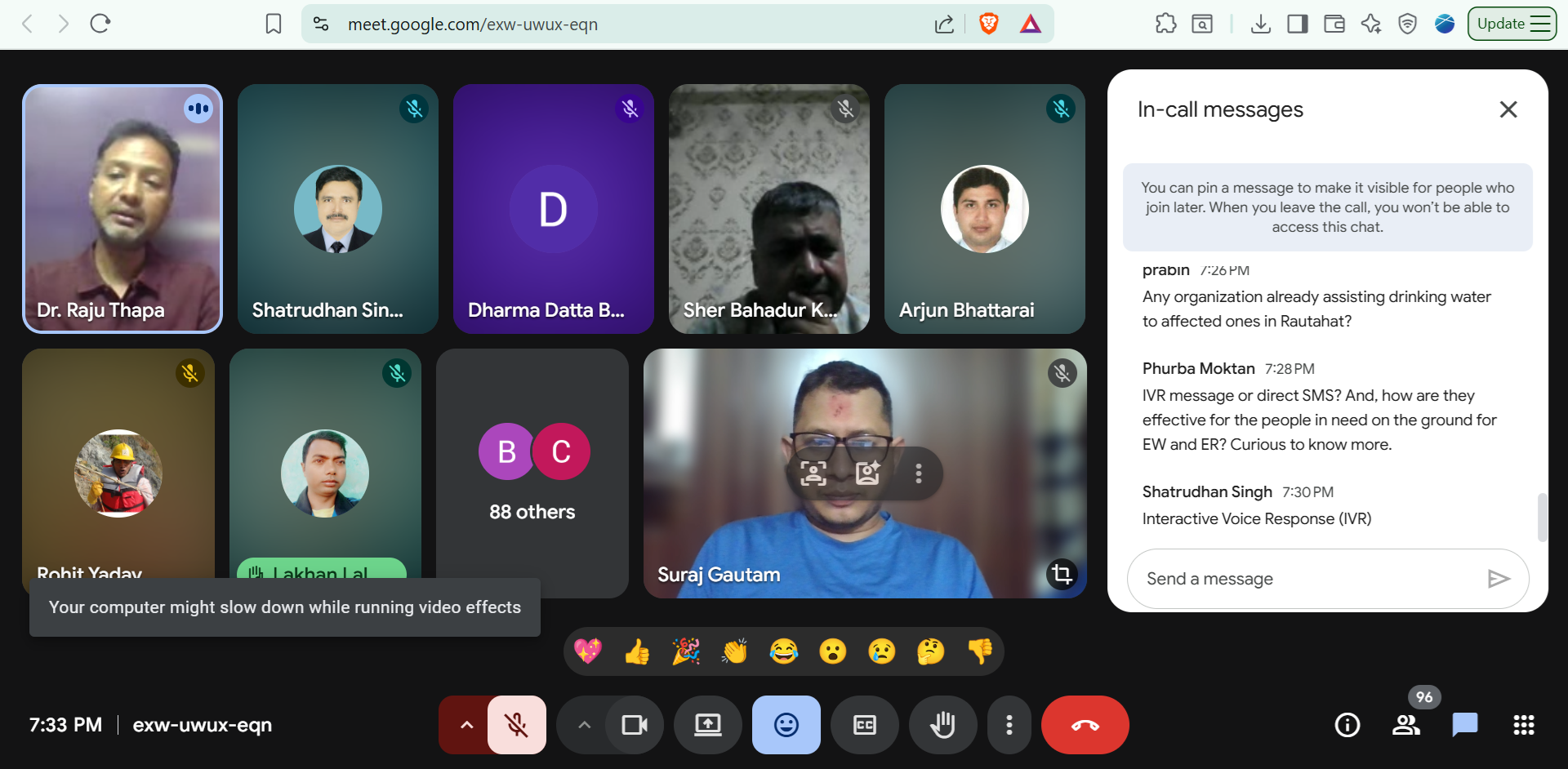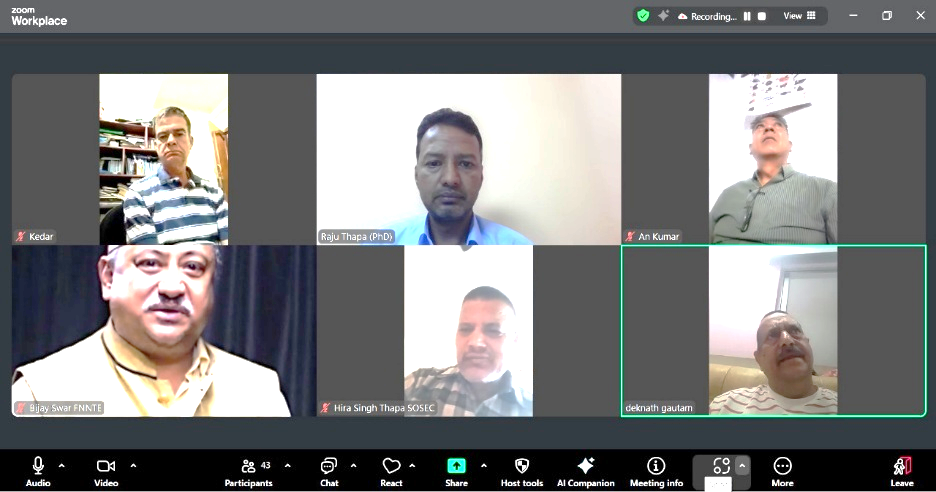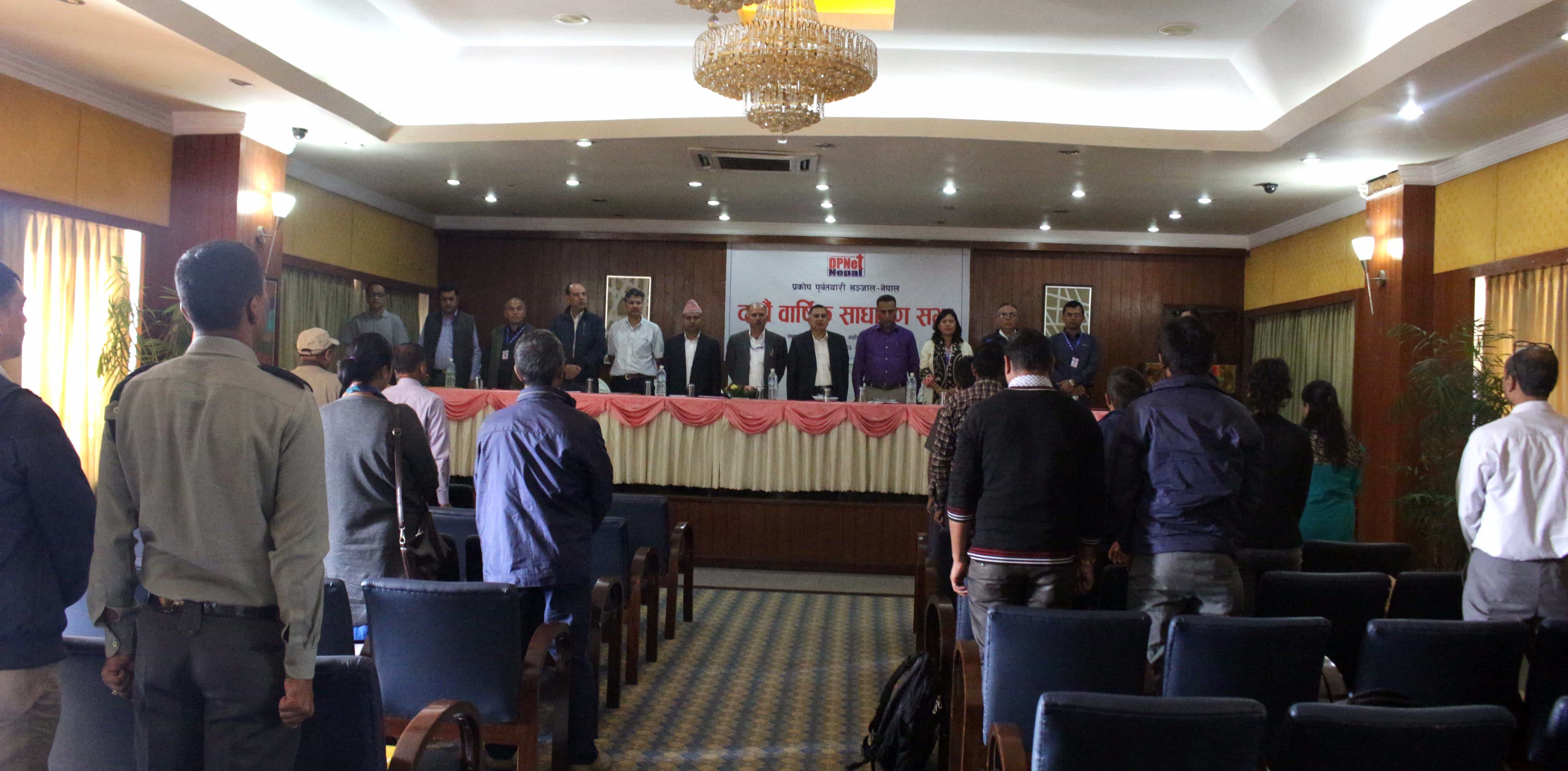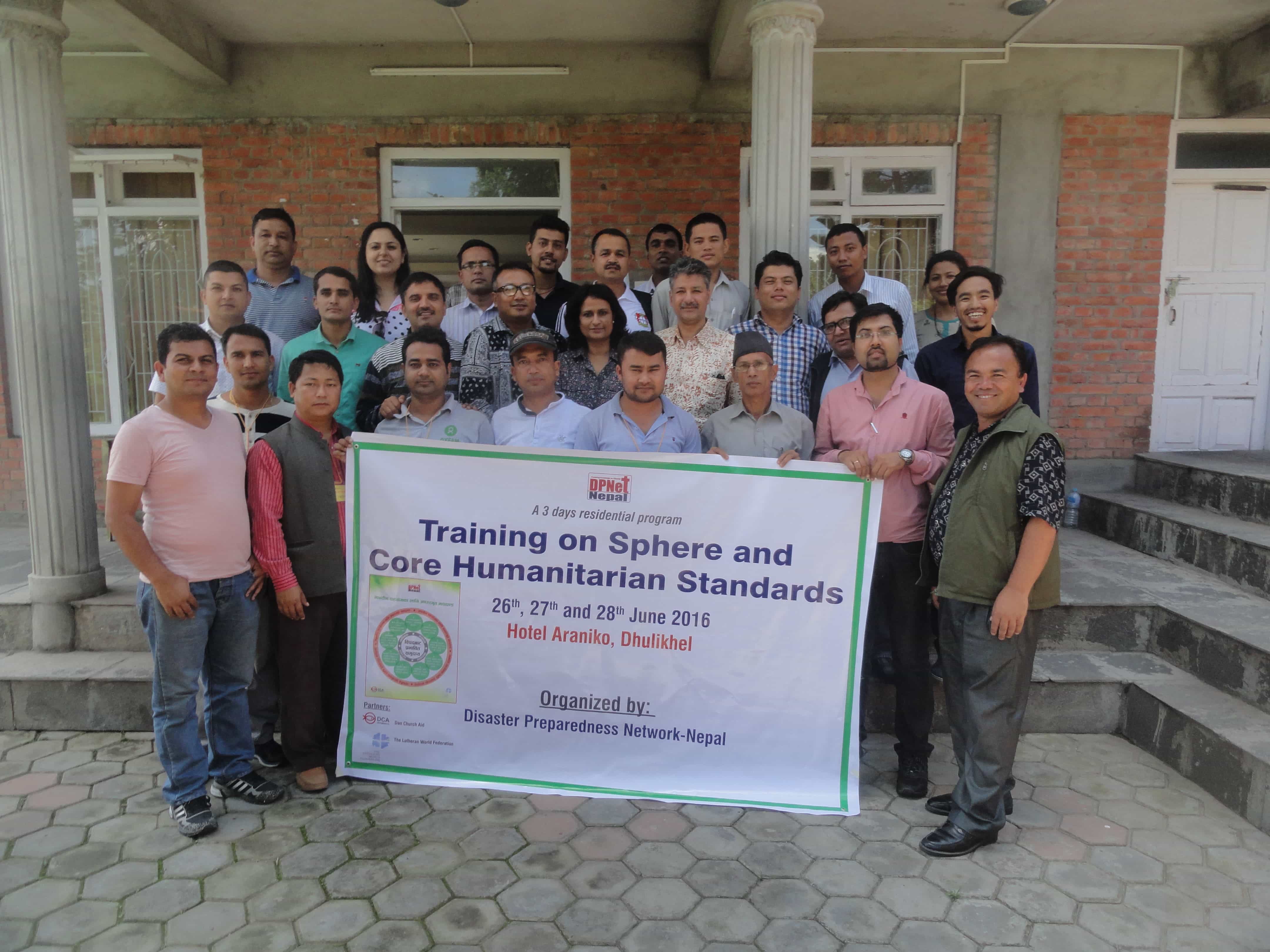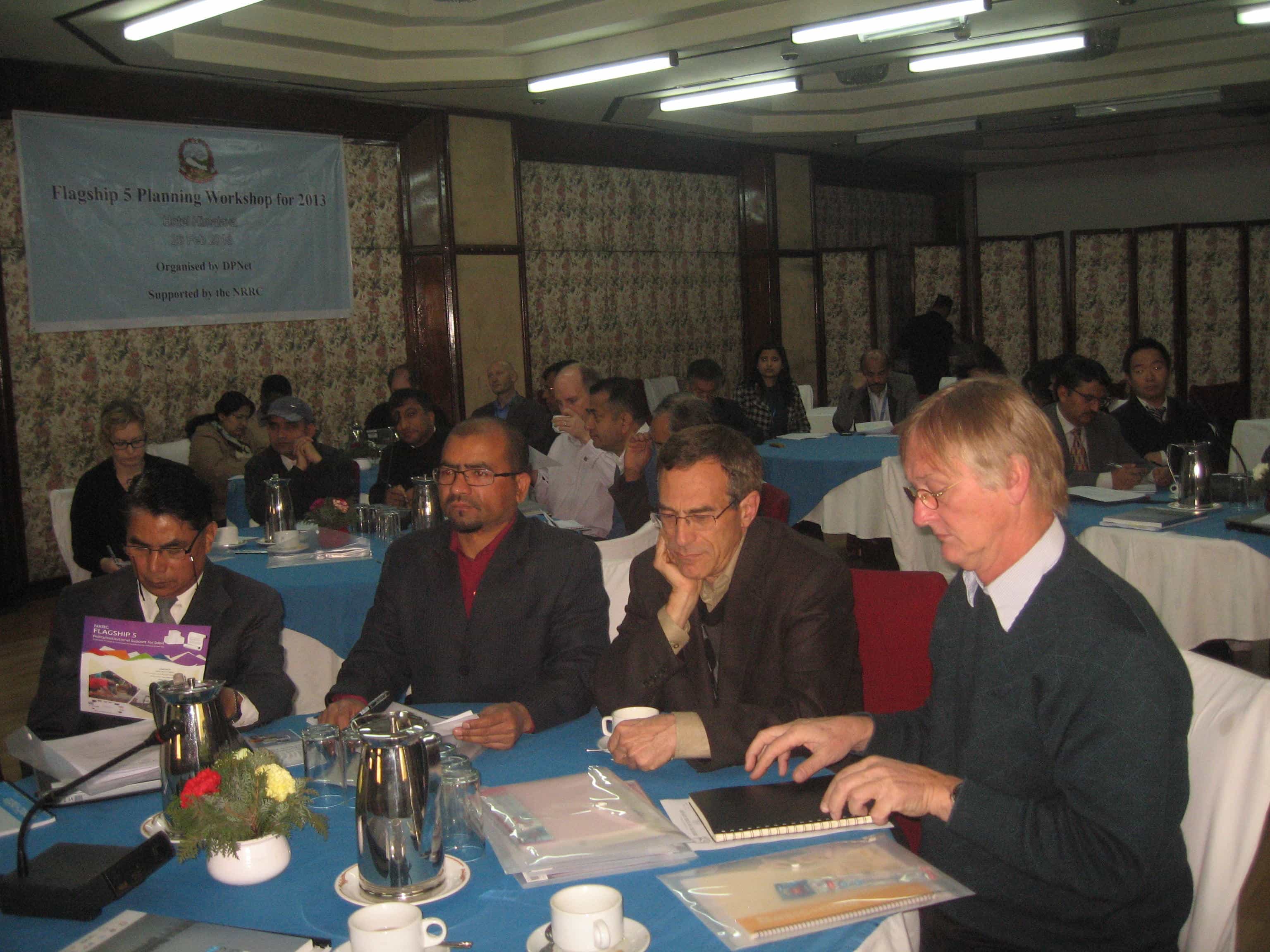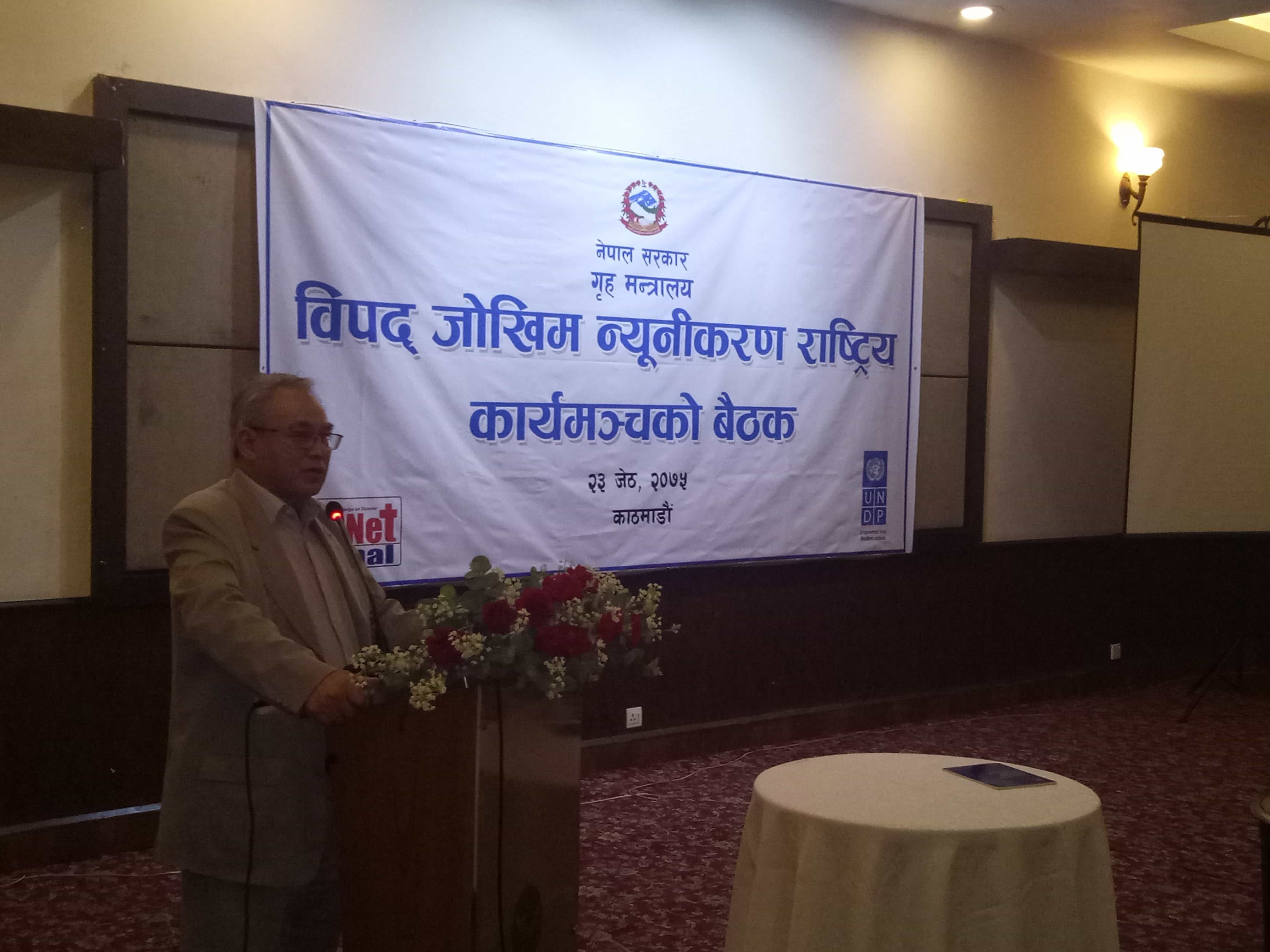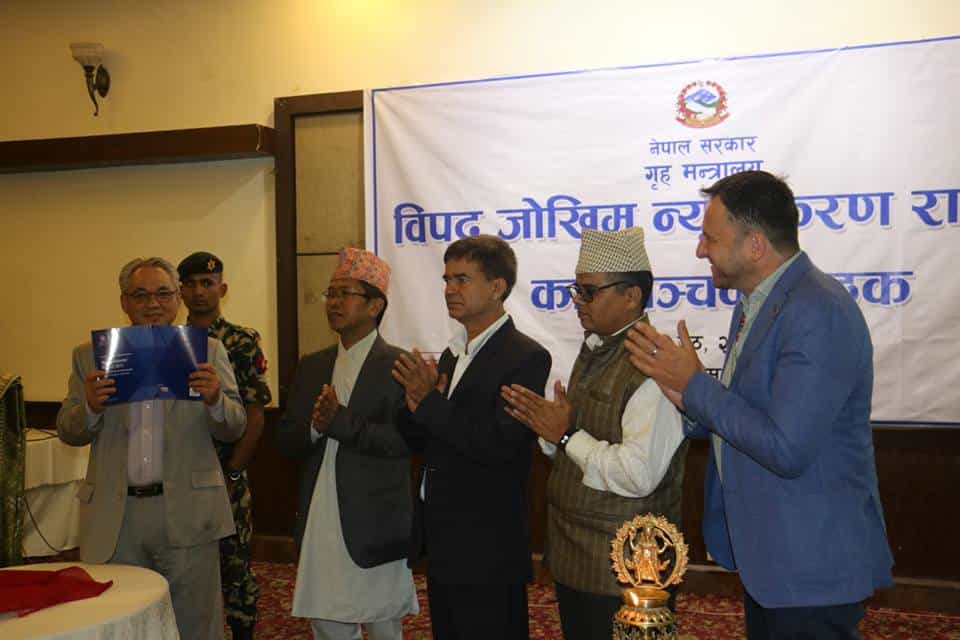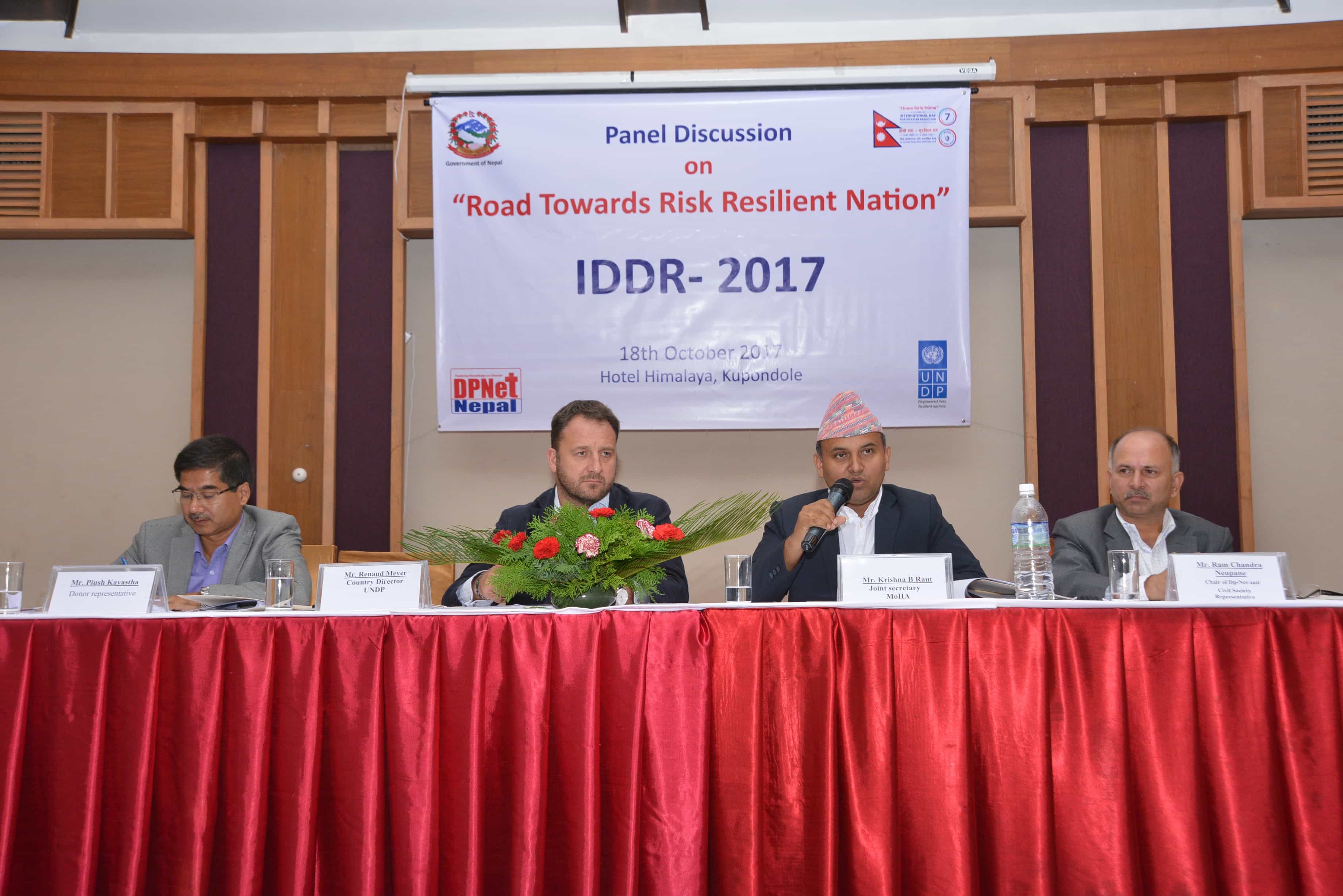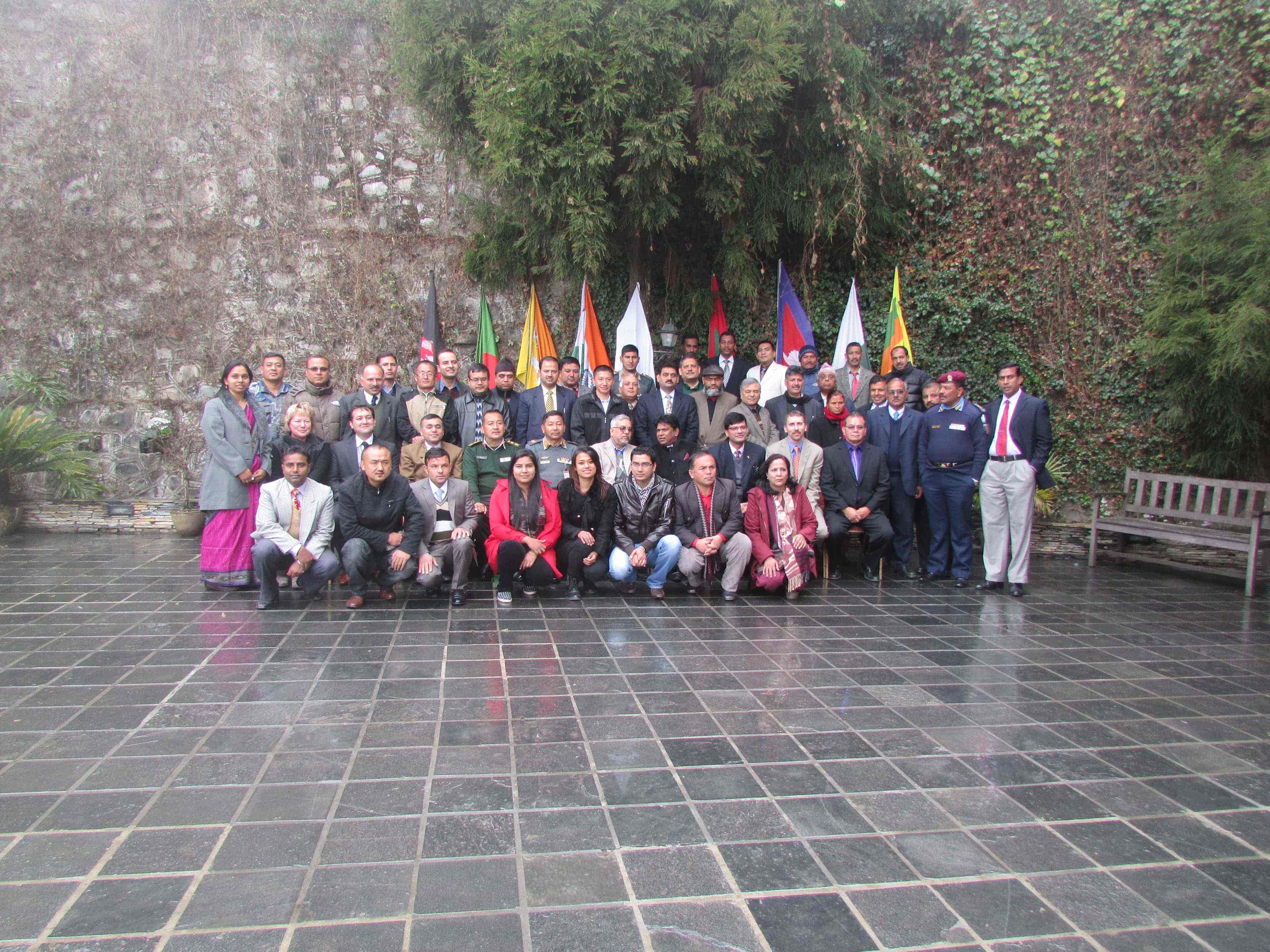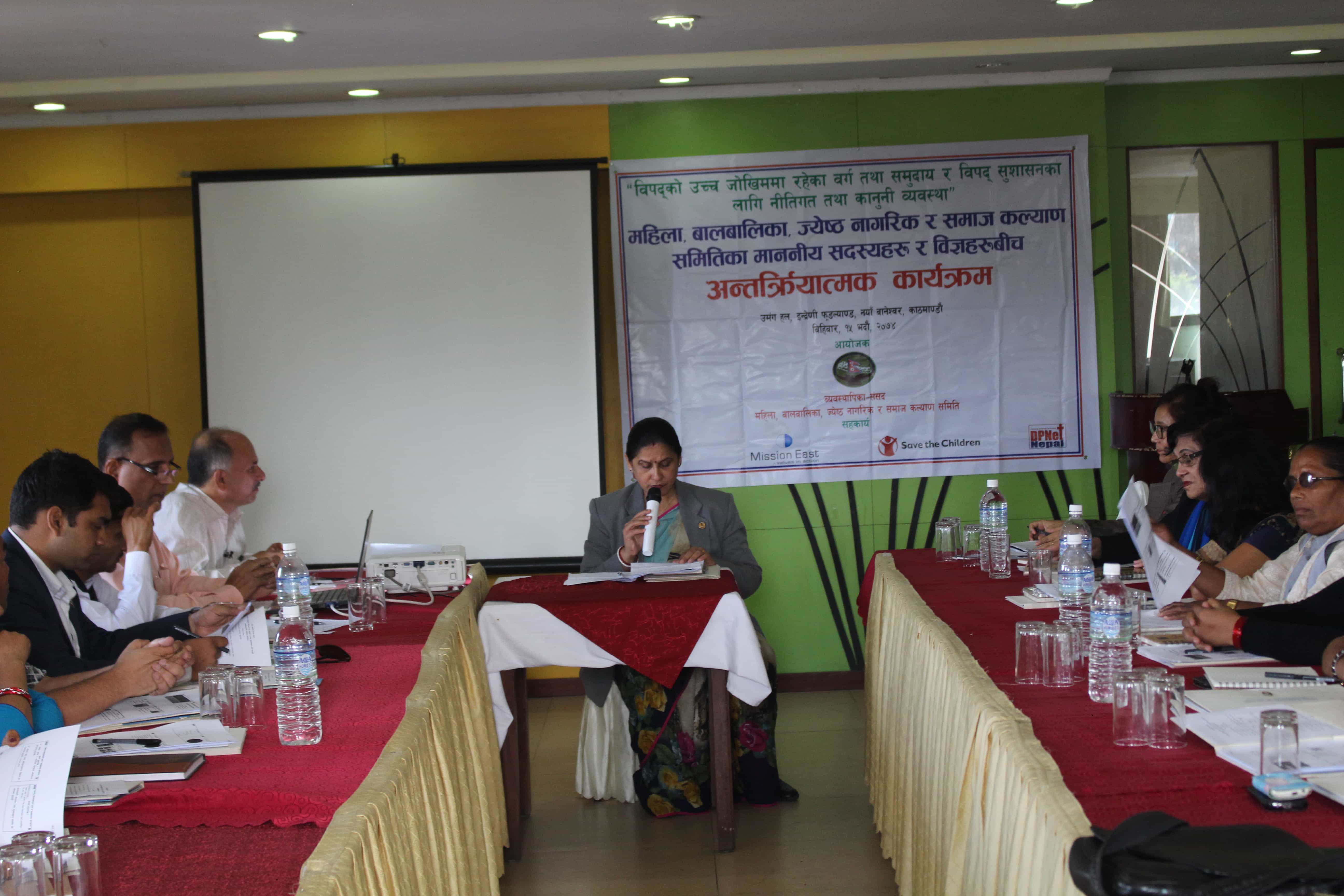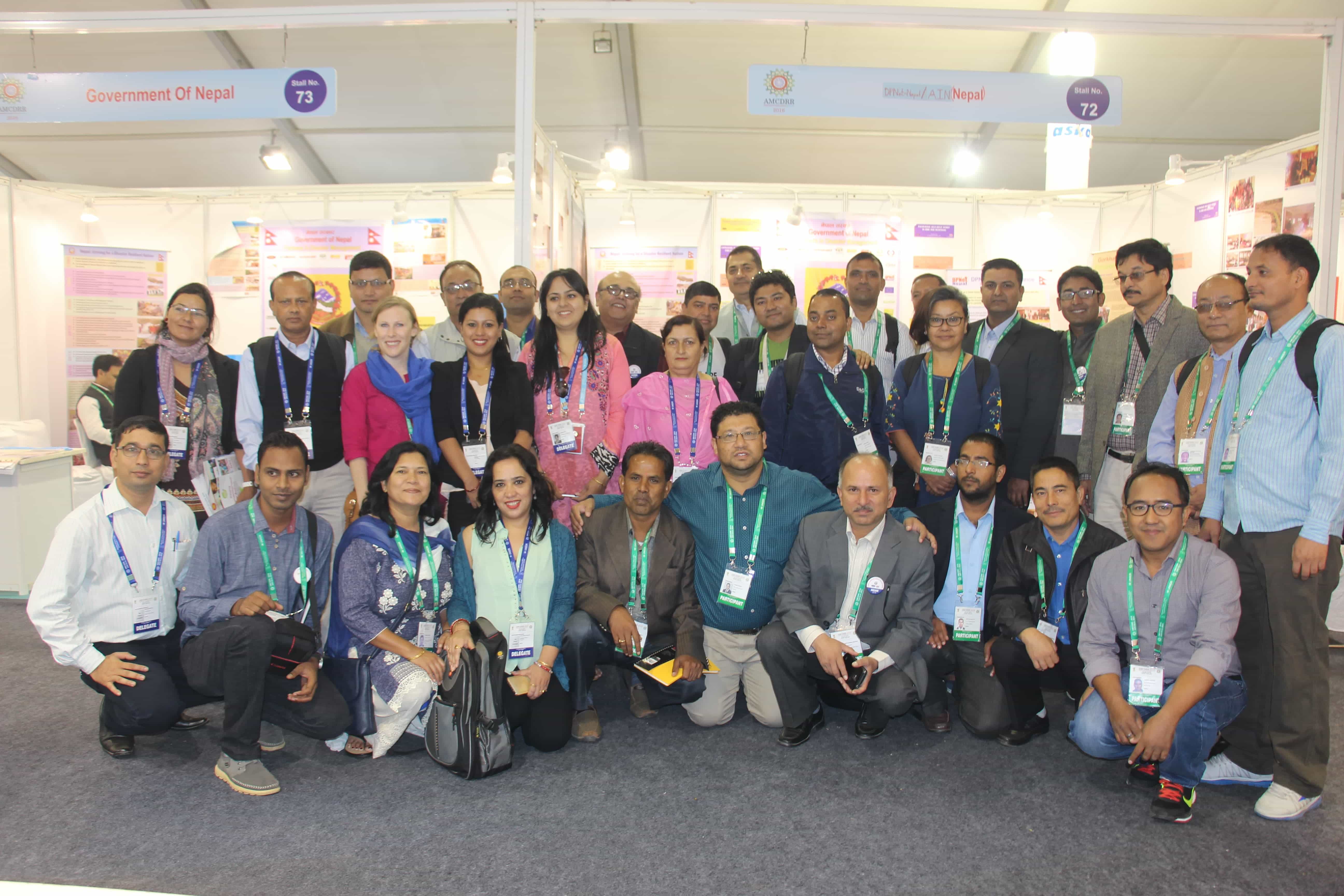Second DRR Dialogue with the Home Minister Held
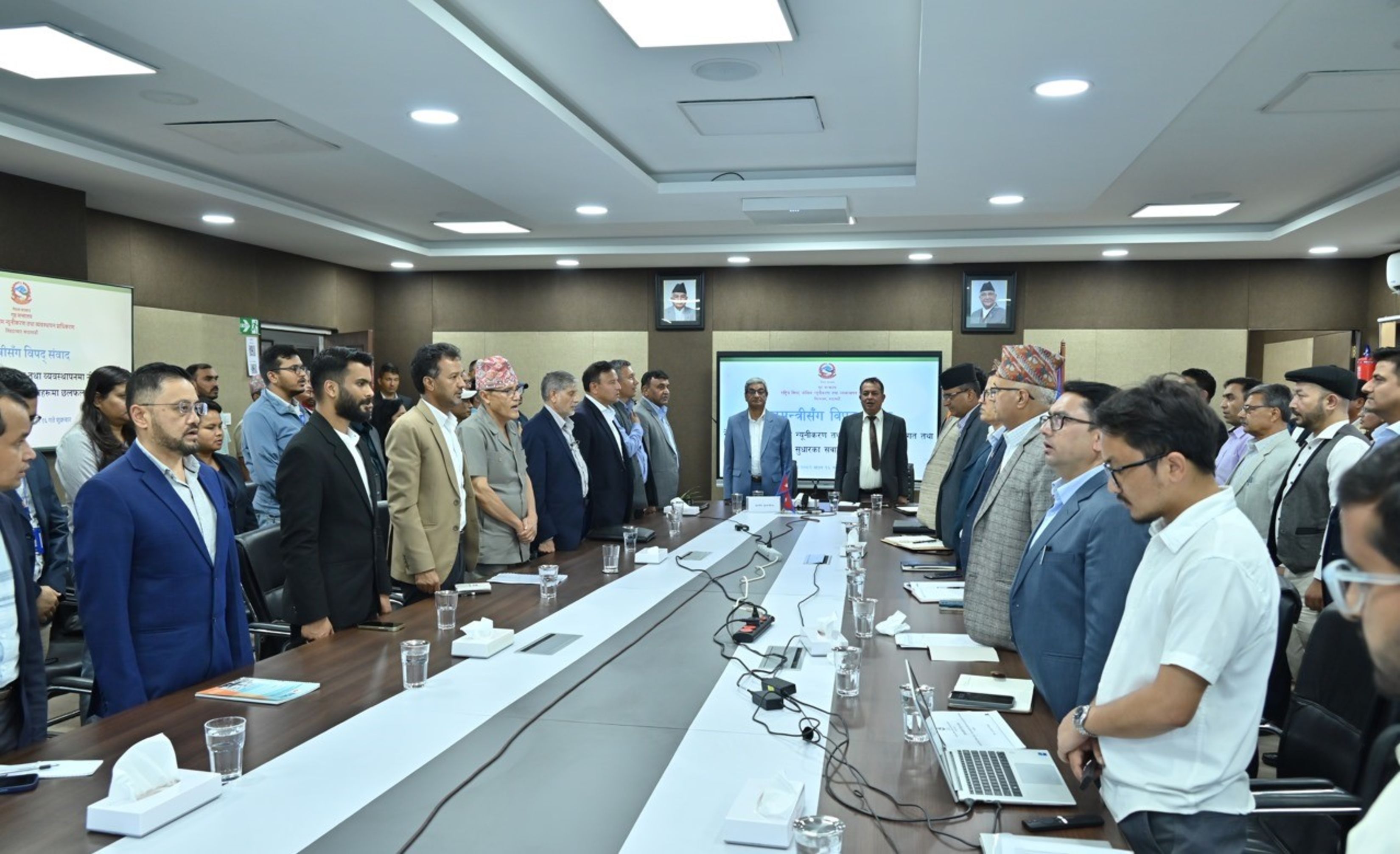
On 1 August 2025 in Singhadurbar, Kathmandu, the National Disaster Risk Reduction and Management Authority (NDRRMA) in coordination with DPNet organized the second dialogue to review policy and institutional reforms for disaster risk reduction and management (DRRM) in Nepal. Chaired by NDRRMA Chief Executive Er. Dinesh Prasad Bhatt and attended by Chief Guest Hon. Ramesh Lekhak, Minister of Home Affairs and Chair of the DRRM Executive Committee, the forum brought together senior officials across ministries, representatives of major political parties, UN agencies, academia, I/NGOs, private sector actors, DRR experts, and media, many from the National Platform for DRR (NPDRR). Joint Secretary Ms. Roshani Kumari Shrestha opened the session framing the objective of converting long-acknowledged gaps into practical institutional and policy fixes, while Joint Secretary Mr. Bandu Prasad Banstola highlighted that the series, run with development partners, seeks to translate dialogue outputs into concrete roles and actions.
Keynote speaker Mr. Bamshi Kumar Acharya mapped Nepal’s expanding but fragmented DRRM framework, covering the DRRM Act (2074), Local Governance Operation Act (2074), DRRM Regulation (2076), DRR National Policy (2075), the National Plan of Action (2018–2030), and a suite of directives and procedures, highlighting the atypical sequence of enacting law before policy, partial translation of legal mandates into regulations, and uneven practice across tiers. He noted mandate gaps (notably recovery within NDRRMA’s 25 functions), thin staffing (38 posts), and the need to detail operational roles under the National Disaster Response Framework. On financing, he called for a dedicated DRR budget code, clearer fund pathways to provinces and local levels, and risk financing instruments for catastrophic loss, loss and damage, and climate funds, alongside amendments to the Act and regulations, implementable SOPs and standards, structure aligned to subject expertise, and stronger global engagement.
The floor emphasized four themes: institutional authority, continuity and capacity, financing, and data/technology linked to social protection. Experts, including Dr. Meen Bahadur Poudyal Chhetri and Prof. Dr. Jibraj Pokharel, urged empowering NDRRMA, with some advocating placement under the Prime Minister’s Office, citing weak subnational presence and an underperforming NEOC. Speakers flagged frequent leadership transfers, missing SOPs, outdated assessment guidelines and terminology, and attrition of trained responders; NSET’s Mr. Surya Narayan Shrestha proposed a DRR civil service cadre, an active Executive Committee, and operational EOCs at all tiers. FCGO’s Mr. Yogesh Parajuli argued for a mixed cadre of civil servants and experts, a defined budget code, improved routing of funds to local governments, and remedies to “budget dumping.” Former Executive Chief of NDRRMA Dr. Bhimsha Kumar Bhusal called for integrated and resilient data systems, GIS/remote sensing capacity, robust early warning, a dedicated response force, reduced staff churn, private sector engagement, and a proactive posture that includes Shock-Responsive Social Protection. Dr. Raju Thapa, Chairperson of DPNet and Member Secretary of NPDRR, shared that while Nepal has made progress in DRR policy formulation, past learnings and commitments are often overlooked. Referring to the Strategic Plan of Action (2018–2030), he emphasized its alignment with the Sendai Framework and noted its lack of implementation, particularly in meeting targets such as reducing disaster-related deaths, so such target of the policy documents need to be revised. He also pointed out that key guidelines like the Disaster Assessment Guideline and the DRR Vocabulary, both developed in 2072 B.S., are outdated and do not reflect the post-federalism structure or current global standards. To address these gaps, Dr. Thapa recommended forming a small technical expert panel to review existing DRR policies and suggest reforms to the ministerial level. Political leaders Mr. Khimlal Bhattarai (CPN-UML) and Mr. Kalyan Gurung (Nepali Congress) backed elevating NDRRMA’s legal and financial standing, equipping local responders, insuring front-line workers, directing resources down to ward Disaster Management Committees, and enforcing environmentally responsible development practices.
Hon. Lekhak welcomed the series, tasked the Home Secretary and NDRRMA Executive Chief to prepare a prioritized list of legal and policy reforms aimed at simplification and effectiveness, and stressed strengthening early warning systems, including telecom-enabled alerts and direct call cascades to ensure last-mile reach. He encouraged integration of non-state actors and cited new MoUs with helicopter and drone operators to augment response capacity. Acknowledging emerging public safety crises, cybercrime, drugs, road accidents, and suicide, he expressed openness to structural recalibration of the DRR authority if it improves performance and highlighted life-insurance provisions for responders as a priority. He emphasized the need for a long-term strategic approach, whether the Authority remains within or outside the Ministry, and urged stakeholders to provide thoughtful suggestions. The Home Minister further cautioned that any recommendation to place NDRRMA outside the Ministry of Home Affairs (MoHA) must consider a 10–15-year perspective, warning that without such foresight, there could be a situation in 2–4 years where it may appear the Authority should have remained under MoHA.
Executive Chief Bhatt affirmed NDRRMA’s coordinating-and-leading role, noted progress on municipal warehouses, volunteer training, and in-house drone capability, invited written expert inputs for regulatory revisions, and flagged a proposed O&M reform expanding technical posts from 38 to 67 while streamlining rules that slow relief decisions. Upgrades to the 1155 helpline and the MIS are underway, with opportunities for transboundary early warning cooperation with China.

